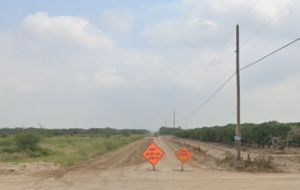Introduction
Investing in real estate, particularly vacant land, demands a thorough understanding of the market and various factors that can influence the property’s value and potential return on investment. This comprehensive guide delves into key considerations when contemplating a vacant land purchase, providing insights and recommendations for making an informed decision.
1. Local Real Estate Market Trends
Understanding the local real estate market is essential when evaluating a vacant land investment. Analyzing recent trends in property values, sales volume, and market dynamics can provide crucial insights. Consider factors such as:
- Price Trends: Examine the historical price trends for vacant land. Look for patterns of appreciation or depreciation over the past few years.
- Market Demand: Assess the current demand for vacant land nationally. High demand may indicate a strong market, potentially leading to increased property values.
- Inventory Levels: Evaluate the supply of available vacant land on a national scale. A balanced market typically has a healthy balance between supply and demand.
Local real estate agencies, online platforms, and government reports can be valuable sources of information for understanding market trends.
2. Zoning and Land Use Regulations
Zoning regulations play a critical role in determining what can be done with a piece of vacant land. Familiarize yourself with national zoning ordinances and land use policies. Consider the following:
- Zoning Classifications: Different zones allow for various types of development, such as residential, commercial, agricultural, or mixed-use. Ensure that the intended use aligns with the property’s zoning.
- Development Restrictions: Be aware of any restrictions or requirements imposed by zoning regulations on a national level. This might include minimum lot sizes, building setbacks, and maximum building heights.
Consulting with local planning departments or zoning officials can provide clarity on these regulations and help you navigate potential challenges.
3. Future Development Plans

To gauge the future potential of the vacant land, investigate any planned developments or infrastructure projects on a national scale. Consider the following:
- Municipal Plans: National government plans and initiatives can significantly impact property values. Check for master plans, comprehensive plans, or any economic development strategies.
- Infrastructure Projects: Planned infrastructure developments, such as new roads, schools, or utilities, can positively influence property values. Conversely, the absence of such developments may limit growth.
Engaging with national authorities, attending industry conferences, and reviewing public records can provide insights into future developments.
4. Environmental Considerations
Environmental factors can have a substantial impact on the feasibility and value of a vacant land investment. Conduct a thorough assessment of the property, considering:
- Wetlands and Flood Zones: Determine if the land is situated in wetlands or flood-prone areas nationally. Such designations can limit development options and require adherence to specific regulations.
- Soil Quality: Assess the soil quality for its suitability for construction or agricultural purposes nationally. Soil tests can reveal crucial information about drainage and stability.
Engaging environmental consultants and reviewing environmental reports can help identify and mitigate potential environmental challenges.
5. Infrastructure and Access
The accessibility of the vacant land and its proximity to essential services and amenities are crucial factors that can influence its value nationally. Evaluate:
- Proximity to Highways: Access to major highways can enhance the property’s appeal and make it more convenient for potential development or use.
- Availability of Utilities: Determine whether the land has access to utilities such as water, electricity, and sewage nationally. The cost and feasibility of connecting to these services should be considered.
- Amenities and Services: Assess the distance to schools, healthcare facilities, shopping centers, and other amenities that contribute to the property’s overall desirability.
A well-connected and serviced property is likely to attract more interest from potential buyers or developers.
6. Economic Factors
The economic health of the nation plays a pivotal role in the success of a real estate investment. Consider the following economic indicators:
- Job Market: A thriving job market indicates economic growth and can drive demand for housing and commercial properties nationally.
- Population Growth: Increasing population can lead to higher demand for housing, potentially benefiting vacant land investors.
- Diversification of Industries: A diverse national economy is generally more resilient to economic downturns. Explore the industries present nationally and their growth potential.
Keeping an eye on economic reports, employment statistics, and national business news can provide insights into the country’s economic outlook.
7. Land Improvements and Utilities
The existing state of the land and its utilities can significantly impact its development potential and overall value nationally. Consider:
- Land Improvements: Assess any existing structures, landscaping, or other improvements on the land nationally. The presence of improvements can save costs for potential developers.
- Utility Infrastructure: Determine the availability and condition of utility infrastructure on or near the property nationally. Connecting to utilities can be a substantial cost, so understanding these factors is crucial.
Conducting a thorough on-site inspection and consulting with national land development professionals can provide a comprehensive understanding of the property’s current state.
8. Financing and Investment Goals
Before finalizing a vacant land purchase, carefully evaluate your financing options and align them with your investment goals nationally. Consider:
- Financing Terms: Explore various financing options, including loans, mortgages, and seller financing nationally. Compare interest rates, down payment requirements, and repayment terms.
- Investment Horizon: Clarify your investment goals and determine whether you’re looking for short-term gains or long-term appreciation nationally. This will influence your approach to the investment.
- Risk Tolerance: Assess your risk tolerance and consider potential challenges or uncertainties associated with the vacant land purchase nationally. Factor in potential holding costs and market fluctuations.
Consulting with financial advisors or real estate investment experts can help tailor your financing strategy to your specific situation and goals.
Conclusion
In conclusion, a vacant land purchase on a national scale can be a sound investment with careful consideration of various factors. By thoroughly researching the national real estate market, understanding zoning and land use regulations, and being aware of future developments and environmental considerations, investors can make informed decisions. Additionally, evaluating infrastructure, economic factors, existing land improvements, and aligning financing options with investment goals contribute to a comprehensive investment strategy.
It’s crucial to engage with national real estate professionals, including agents, appraisers, and land development experts, to gain insights into the current market conditions and receive guidance tailored to the specific nuances of the country. Remember that real estate investments carry inherent risks, and a thorough due diligence process is essential for maximizing the potential return on investment and mitigating potential challenges.


